Fact about perfume
Perfume is made up of alcohol, water & perfume (fragrance) oil.
Perfume is made up of alcohol, water & perfume (fragrance) oil.
It is a word that comes from Latin per fumum, which means "through smoke" (per means through, fumum means smoke).
There are 3 major types: oriental, floral & chypre (means "very sincere" in French). There are also many sub-variations such as woody, musky, aquatic, spicy & fruity.
Eau de - means "water of" in French.
Eau de - means "water of" in French.
Eau de cologne - contains about 3-5% perfume oil. Used by men.
Aftershave lotions & splash colognes - contains about 0.5-2% perfume oil. Used by men.
Eau de parfum - contains about 15-18% perfume oil. Used by women.
Eau de toilette - contains about 4-8% perfume oil. Used by women.
Parfum (perfume) is the strongest of them all as it contains the most perfume oil. Use sparingly.
Scented ingredients added to perfumes include ginger, grapefruit, musk, peppercorns, mandarin peel, fig leaves, rose, watercress, bamboo, clementine, vanilia, honeysuckle, green tea & the list goes on.
A perfume contains between 10 to more than 250 ingredients.Early Use of Perfumes
There has always been a trade in scents and by the year 2008 perfume had become a $10 billion industry. Today women have fragrance wardrobes of at least six different perfumes, rather than a single signature perfume, keeping one special perfume for occasion moments.People have used perfume, oils and unguents on their bodies for thousands of years in lesser or greater amounts dependant on fashion whims. The early Egyptians used perfumed balms as part of religious ceremonies and later as part of pre love making preparations. Myrrh and Frankincense were exuded gums from trees used to scent the atmosphere in rituals. Other plants such as rose and peppermint were steeped in oils until a perfumed unguent formed. The unguent was then rubbed into the skin. It's interesting to note that perfume has come full circle today as more and more of us seek out high quality aromatherapy perfumed oils to use in exactly the same way as our ancestors did.
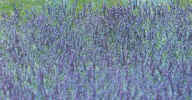 Products that enhance the feel of skin and the smell of the body have been highly valued in every culture. Trade routes introduced spices to other parts of the world and a wider range of scents could be made. In the past people often mixed their own potions using home methods creating their own aromatherapy products. Many homes had a still room where essences were steeped out of flowers and herbs.
Products that enhance the feel of skin and the smell of the body have been highly valued in every culture. Trade routes introduced spices to other parts of the world and a wider range of scents could be made. In the past people often mixed their own potions using home methods creating their own aromatherapy products. Many homes had a still room where essences were steeped out of flowers and herbs. Left - Lavender field in Grasse France.
Perfume fell out of use during early Christianity, but was revived in the medieval period. By the 1600s scents were applied to objects such as furniture, gloves and fans. In the Georgian Era non greasy eau de cologne was developed and it had many uses from bath essence to mouthwash.
»
Chemical Advances in Perfumery
The late 19th century was the first real era of perfume as we know it when new scents were created because of advances in organic chemistry knowledge. Synthetic perfume products were used in place of certain hard to find or expensive ingredients. At the same time a similar chemical knowledge development happened in textile printing dyes.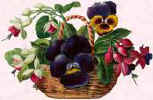 Grasse in Provence, France became a centre for flower and herb growing for the perfume industry. The men who treated leathers in the same area found the smells so bad they perfumed themselves and the leathers. They were knowledgeable about making the botanical essences and were the early perfume noses. But it was only in the C20th that scents and designer perfumes were really mass produced. Before that, the few trade names that existed were Coty and Yardley who made fairly light scents with familiar smells.
Grasse in Provence, France became a centre for flower and herb growing for the perfume industry. The men who treated leathers in the same area found the smells so bad they perfumed themselves and the leathers. They were knowledgeable about making the botanical essences and were the early perfume noses. But it was only in the C20th that scents and designer perfumes were really mass produced. Before that, the few trade names that existed were Coty and Yardley who made fairly light scents with familiar smells. What Is Perfume Made From?
Perfume is made from about 78% to 95% of specially denatured ethyl alcohol and a remainder of essential oils.Perfume is the costliest form of fragrance with 22% of essential oils.
Eau de Parfum (EDP), comes next with between 15 and 22% essential oils.
That's followed by Eau de Toilette (EDT) with 8 to 15% oils.
The weaker Eau de Cologne has just 4% essential oils.
For those who crave super subtlety Eau Fraiche with 1 to 3% essential oils, is the lightest dilution of fragrance.
Many new perfumes are promoted as EDPs and an EDT is not always produced as there has been a vogue for Eau de Parfum as individuals want a more lasting signature.
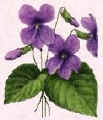 There are major fragrance categories - Floral, Oriental, Floriental, Chypre, Green Marine and Fruit. Typical plant products include anise, bay leaf, bergamot, cardamom, cedar wood, eucalyptus, frankincense, gardenia, geranium, iris, jasmine, lavender, lemon, lilac, lily, lily of the valley, magnolia, moss, neroli, orange, orris, patchouli, pine, raspberry, rose, sage, sandalwood, tuberose, vanilla, violet and ylang-ylang.
There are major fragrance categories - Floral, Oriental, Floriental, Chypre, Green Marine and Fruit. Typical plant products include anise, bay leaf, bergamot, cardamom, cedar wood, eucalyptus, frankincense, gardenia, geranium, iris, jasmine, lavender, lemon, lilac, lily, lily of the valley, magnolia, moss, neroli, orange, orris, patchouli, pine, raspberry, rose, sage, sandalwood, tuberose, vanilla, violet and ylang-ylang. The memory of a scent left by violets.
Typical animal products used in perfume include musk from the male musk deer, ambergris from sperm whales, castoreum a secretion of the beaver and civet from the civet cat. All are used as fixatives and add an indefinable mystery to the smell at the same time.
»
Tips for Wearing Perfume
When you apply perfumes apply them to pulse points such as the folds in the crook of your elbow and back of knees, wrist, neck and cleavage. Make sure you do not rub wrists together as this crushes the smell. Spraying a little into the air is also good if you walk straight into the perfume. This helps to diffuse it over your body. Do not simply apply to the neck always work up the body as the scent rises. Also consider wearing in your bra a small ball of perfume impregnated cotton wool.
Consider layering perfumes. Use all the same perfume in various products. Begin with shower or bath gel and then rub in body lotion or spray with a matching after bath spray. Finally apply the scent preferably as perfume or EDP. I find that the use of body lotion makes you feel really scented and it is probably to do with starting at the feet and applying the scent all over allowing the scent to rise. It also makes you feel extra special and very pampered.
Keep bottles tightly stopped, away from direct heat and out of sunlight. You will certainly know when they have gone off as you'll notice that you do not get that lovely boost of heavenly scent when you spray or dab and the fragrance will look darker in the bottle. Some perfumes come in blue or opaque bottles and these store perfume well.
Try to choose perfumes that suit you, not your friends or family. Test a perfume in a store and then walk around for a minimum of ten minutes. Some perfumes take more like half an hour or an hour to truly develop. For example, Boudoir by Vivienne Westwood, Jicky by Guerlain and Must de Cartier are all ones I love after an hour, but am not convinced on first sniff.
Put a few drops of perfume onto an oil burner to scent your bedroom. At Christmas use musky oriental room fragrances in the form of perfumed incense sticks, candle or sprays to enhance the familiar associated yuletide seasonal smells of cinnamon, orange oil, pine, frankincense and myrrh.
Famous Early Perfumes - Chanel No 5
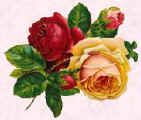 Ernest Beaux created Chanel No. 5 for Coco Chanel in 1921. It has a floral top note of ylang-ylang and neroli, with a heart of blends of jasmine and rose all above a woody base of sandalwood and vetiver. Chanel believed women should wear perfume wherever they hoped to be kissed. Today Chanel No.5 sells a bottle every 30 seconds.
Ernest Beaux created Chanel No. 5 for Coco Chanel in 1921. It has a floral top note of ylang-ylang and neroli, with a heart of blends of jasmine and rose all above a woody base of sandalwood and vetiver. Chanel believed women should wear perfume wherever they hoped to be kissed. Today Chanel No.5 sells a bottle every 30 seconds.In recent years Chanel No. 5 has been marketed as a spray with two refills in an effort to have it recognised as an essential everyday finishing touch rather than a precious scent to be used sparingly.
Right - The hypnotic scent of roses.
One of my favourites is Guerlain's Shalimar launched first in 1925 and relaunched in 2001. It's a refined oriental feminine fragrance with iris, vanilla, and rose. It has the wonderful Guerlain quality that never dates and always gets compliments. I still think it's one of the very best Guerlain perfumes. They are all particularly wonderful and each seems to develop with the individual. Maybe it really is because the secret ingredient called Guerlinade the X factor that is added to every new perfume bearing the Guerlain name, makes it smell like a truly sense hitting perfume unlike later unisex creations.
In 1932 Dana made the exotic Tabu, Worth made the memorable Je Reviens which remained popular in the 50s and 60s and in 1934 Elizabeth Arden developed Blue Grass. All are still sold today. Later Molyneux and Schiaparelli and other designers produced exotic perfumes in direct competition with Chanel. Jean Patou launched Joy in 1935 and it was voted Scent of the 20th Century at the Fragrance Foundation FiFi awards 2000.
1944 saw the introduction of Femme by Rochas. After the war lighter fresher perfumes by Dior and Balmain which could be worn easily by day became more and more popular with the middle classes. In 1947 Dior launched the ever popular Miss Dior. I still love these older perfumes such as Miss Dior and the wonderful lily Diorissimo.
˚
Scents for Everyone
At this time the working classes still rarely used anything more exotic than the very early scents or the new perfumes produced by cosmetic houses rather than fashion design house couturiers.Some of the less costly perfumes had quite pleasing scents, but they had none of the cachet of Couture house names. Everyday prices meant that the ordinary person could afford to buy a perfume gift from ranges by Coty, Yardley, Max Factor and Revlon and not break the bank.
Max Factor's Hypnotique and Primitif were very popular in the 1950s as was Tweed by Lentheric, and Coty's L'Aimant. Revlon scored great success with Intimate and Aquamarine. Intimate is still available on some Internet sites. Yardley's Lily of the Valley or French Fern bath salts and talc were always to be found in the Christmas stockings of the masses of working folk.

Goya also produced scents in a price conscious range. Goya's Black Rose and Here's My Heart featured regularly in full page adverts. Many people still used 4711 Eau de Cologne, with its clean fresh smell.
A 4711 roll on stick was especially popular for summer heat perspiration before air conditioning.
From Woolworth's young teenagers bought Soir de Paris by Bourjois in its small blue bottle. They delighted in translating the French into Evening in Paris.
Perfume to the Masses
»
Yves St. Laurent launched Y in 1964, Rive Gauche in 1968. Guy Laroche presented Fidji in 1966. Those old favourites Chanel No.5 and Miss Dior were still best sellers with considerable competition from products like Avon's perfume's such as Topaze, Coty's Imprevu and in total contrast, Faberge's earthy daytime Woodhue.
Perfumes for the 1970s
By 1977 Yves St. Laurent had put 'Opium' perfume into production and it was a huge huge success with women everywhere. It was definitely a perfume for sultry evenings. By contrast women enjoyed wearing perfumes like Nina Ricci's L'Air du Temps and Nina Ricci's orange based Bigarade was popular for a while. Ô de Lancôme, Lauder's Cinnabar, and Anais Anais by Cacharel in 1978 (the latter beloved by schoolgirls) were all well received.Revlon's Charlie was a top seller and the trouser wearing woman who wore it was portrayed as a woman at ease with herself at work and play. Avon perfumes were also popular as they were affordable, but interesting coming in huge sprays to dainty containers for perfumed wrist creams. Max Factor's Maxi was in a similar affordable everyday price range.
Various musk based oils and scents at quite low prices flooded chemists shops. Aviance Night Musk by Prince Matchabelli was popular and affordable.
1980 Power Perfumes Match Power Dressers
New designer scents were marketed fiercely in the 80s and for the first time ever, blatant erotic advertising which generated enormous attention from the media led to the success of the 1985 Obsession campaign from Calvin Klein. Obsession with its heavy smell of vanilla was dominant in the market.It was equally impossible to open a magazine or Sunday supplement without being overwhelmed by the scent of Giorgio Beverley Hills on a yellow and white striped sample strip. Eventually Giorgio was banned from restaurants because the smell was too dominant over food aromas.
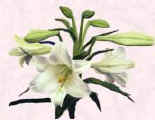
Image and a gimmick were a specialty of the 1980s and Jean Paul Gaultier put a perfume in a glass torso in a tin and continued to produce limited editions and variations of the designer package. Vanderbilt a refined oriental of carnation, rose and mimosa was put on the market in 1982 and was one of the more affordable attractive perfumes. Lou Lou launched in 1987 was a refreshing subtle change from the more oppressive oriental scents.
Right - The intoxication of the heavy scent of lilies.
Some scents of the era like Yves St Laurent's wonderful rose with violets in Paris have become true classics. Sultry sirens found Givenchy's Ysatis and Guerlain's 1989 Samsara hard to beat. Champagne the perfume caused a court case in the champagne making industry and was eventually taken off the market under that name. It is now sold in similar packaging, but as Yvresse.
Fresher Marine Green 1990s and New Millennium Perfumes
The 1990s saw a whole new range of cleaner sharper scents which probably began with Estee Lauder's White Linen from the 1980s. Perfumes such as L'Eau d'Issey by Issey Miyake in 1992, Eternity and Dazzling all have a crisper scent. One refreshing oriental fragrance was Sun Moon Stars by Lagerfeld in 1994 and the earlier 1990 Safari by Ralph Lauren was set in one of the prettiest bottles to grace a dressing table. Organza by Givenchy in a great bottle, launched in 1996 has the smell of a long lost much loved scent and was in competition with the now very popular Allure from Chanel launched the same year.The century ended with softer scents such as Cristobal by Balenciaga or unisex perfumes such as CK One popular with urban fashion followers. In 1999 Cacharel launched Noa Noa. Now renamed simply Noa it is a rounded floral oriental that smells divine. New perfumes of the millennium include the lovely Kenzo Flower, Guerlain's Mahora, Calvin Klein's Truth, Rossellini's Manifesto, Lancôme's Miracle, Boucheron's Initial, YSL's Nu, Michaels Kor's Michael, Nina Ricci's Premier Jour and Vivienne Westwood's exotic tempting Boudoir.
Myths
A great deal of snobbery surrounds perfumes and they are often only considered worthwhile initially if expensive and very exclusive. But the consumer is not stupid however much the hype. If a scent smells unattractive on the individual the consumer will not buy it. The selection of perfumes that do smell wonderful is so great that no one has to wear the latest designer perfume if they hate the smell. Whilst many perfumes do succeed, just as many do not. The perfume has to be good and marketed properly to recoup initial development costs. Launching a new perfume costs between a half and a million pounds, so the scent has to match the mood of the era.The $10 billion market place is so overcrowded that to keep up with the consumer's desire for new scents and still keep mystique and a measure of exclusivity, design houses such as Dior, Guerlain and Lancôme are now producing limited edition perfumes for a few months only with bottles destined to become designer items. In 2001 Dior's limited edition perfume was called Remember Me, a lily fragrance.
There is already a bottle collectors Internet trade for scent bottles with or without perfume.
A great many individuals are now seeking out classic perfumes or specially blended oils. A classic is a perfume that has lasted a minimum of ten years and grown to be much loved.
Some people also find that they sneeze quite violently when they wear modern perfumes. I include myself in this category and I've found that wearing the older perfumes designed more than 50 years ago seems to reduce the sneezing. It's also wonderful to rediscover some of the older perfumes and sense their depth, special individual quality and difference from the scents of today. If only manufacturers would stop tinkering with old favourites.
This may be why many have gone back to purchasing 100% alcohol free perfume oils and mixing their own scents. You can get high quality oils easily online.

No comments:
Post a Comment